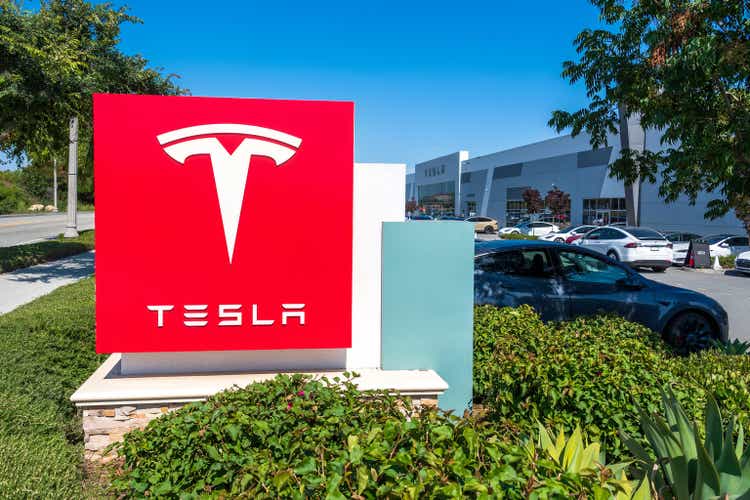When a shopper grabs a last-minute bottle of sunscreen at a Walmart self-checkout or receives a same-day delivery from Amazon, they’re tapping into a fast, AI-powered supply chain—built to move goods quickly, cut down on waste, and keep shelves stocked. The goal is simple: Get the right product to the right customer, as efficiently as possible.
In an era marked by tariffs, labor shortages, and global uncertainty, that mission has never been more critical. According to a recent Nvidia survey, companies are feeling the pressure, with 59% of respondents saying that their supply-chain challenges have grown in the past year. Increasingly, companies are turning to AI to help address these challenges, with 82% of companies planning to increase spending on AI-powered supply-chain tools in the next fiscal year.
Last week, Walmart—the world’s largest retailer—announced it has revamped its global supply chain using real-time AI systems. First deployed in the U.S., the technology is now live in markets like Costa Rica, Mexico, and Canada. These tools help track consumer trends, design product assortments, forecast demand, shift inventory to high-need areas, and reduce overstock. According to Walmart, projects that once took months can now be completed in weeks.
For example, Walmart has developed a system called Trend‑to‑Product—an AI-driven, multi-agent engine that tracks trends (using social media, search data, etc.), generates mood boards and product concepts, and feeds them directly into prototyping and sourcing processes.
“At this scale, the only way to move faster is to move smarter,” Vinod Bidarkoppa, chief technology officer at Walmart International, said in a blog post. “We’re creating systems that turn real-time signals into real-time action, freeing up associates and delivering for customers.”
Walmart’s top competitor, Amazon, has also been highlighting its AI-powered supply-chain advancements. At the company’s re:Invent event in 2024, CEO Andy Jassy talked extensively about how continuous improvement in the supply chain can save a few pennies per package that add up to billions of dollars at scale.
Last month, Amazon shared a blog post showing off big new investments in AI applications that solve logistics challenges in the global supply chain: Wellspring, a generative AI mapping technology; an AI-powered demand forecasting model that’s powering Amazon’s supply chain; and new robotics capabilities using agentic AI systems.
“While these systems work behind the scenes, customers will certainly experience their benefits: more accurate delivery locations, faster shipping options, and improved availability of the products they want, when they want them,” said the blog post.
From forecasting to full-on AI automation
Retailers have been modernizing their supply chains for more than a decade with tools like cloud-based software, AI analytics, and connected sensors. These technologies have helped them plan more accurately, track inventory in motion, and improve order accuracy.
That push accelerated during the COVID-19 pandemic, as shortages, demand spikes, and supply-chain disruptions forced companies to adapt. Services like same-day delivery and buy-online, pick-up-in-store (BOPIS) went from conveniences to must-haves—and they’ve remained part of the baseline ever since.
But the current wave of AI deployment is different, said Manish Kapoor, founder and CEO of Growth Catalyst Group. Earlier systems were helpful but largely reactive—relying on historical data for forecasting or route planning.
“Now, AI operates in real time with predictive and even prescriptive capabilities,” Kapoor said. “These systems can automate operations, reroute shipments on the fly, rebalance inventory across locations, flag supplier risks before they cause disruptions, and even support automated checkout in stores.”
What’s driving the next leap forward is the rise of agentic AI—systems that can carry out complex tasks with minimal human involvement, according to Venky Veeraraghavan, chief product officer at AI platform DataRobot.
“The rise of agentic AI offers a tremendous opportunity to boost productivity,” he said. “Planners can trigger tasks using natural language and receive guided analyses, proactive insights, and automatic issue identification. This new generation of AI can coordinate automation across the entire supply chain in ways that weren’t possible before.”
The result? More efficient planning, fewer silos between departments, better use of working capital—and significantly less waste.
“AI is reshaping supply chains, and some of the most transformative use cases are coming from systems of AI agents,” said Garth Hoff, director of industry strategy at Pricefx. “AI has become an indispensable tool in forecasting and inventory planning. With tariffs, timing is everything—if you’re overstocked or under-forecasting demand, you’re taking a direct hit to margins. AI helps brands sense demand shifts earlier and simulate how different sourcing or tariff scenarios would impact costs.”
Albertsons now moves products to store shelves 15% faster
For Albertsons, one of the largest food and drug retailers in the U.S. with over 2,200 stores in 35 states, AI is used not just for forecasting and optimization, but to reimagine how stores interact with the supply chain in real time.
Chandrakanth Puligundla, tech lead and data analyst at Albertsons, gave an example of how the retailer uses AI to assist in allocating store labor for receiving and replenishment.
“Models predicting daily inbound shipment volumes were built so that they match available store labor,” he explained. “That matching makes sure that the teams get staffed in a proper way for handling all deliveries without overstaffing or any delays.” Albertsons now moves products from the loading dock to store shelves about 15% faster during peak shopping seasons.
A new trend, he added, is the use of AI to analyze unstructured supplier information, such as emails and PDFs. This technology extracts key details about delivery changes, risks, and commitments, helping procurement teams avoid issues that are often overlooked by traditional systems.
“In retail supply chains, AI excels at clarifying complexity, allowing frontline teams to respond quickly and effectively,” he said.
This story was originally featured on Fortune.com

 7 hours ago
1
7 hours ago
1











 English (US) ·
English (US) ·